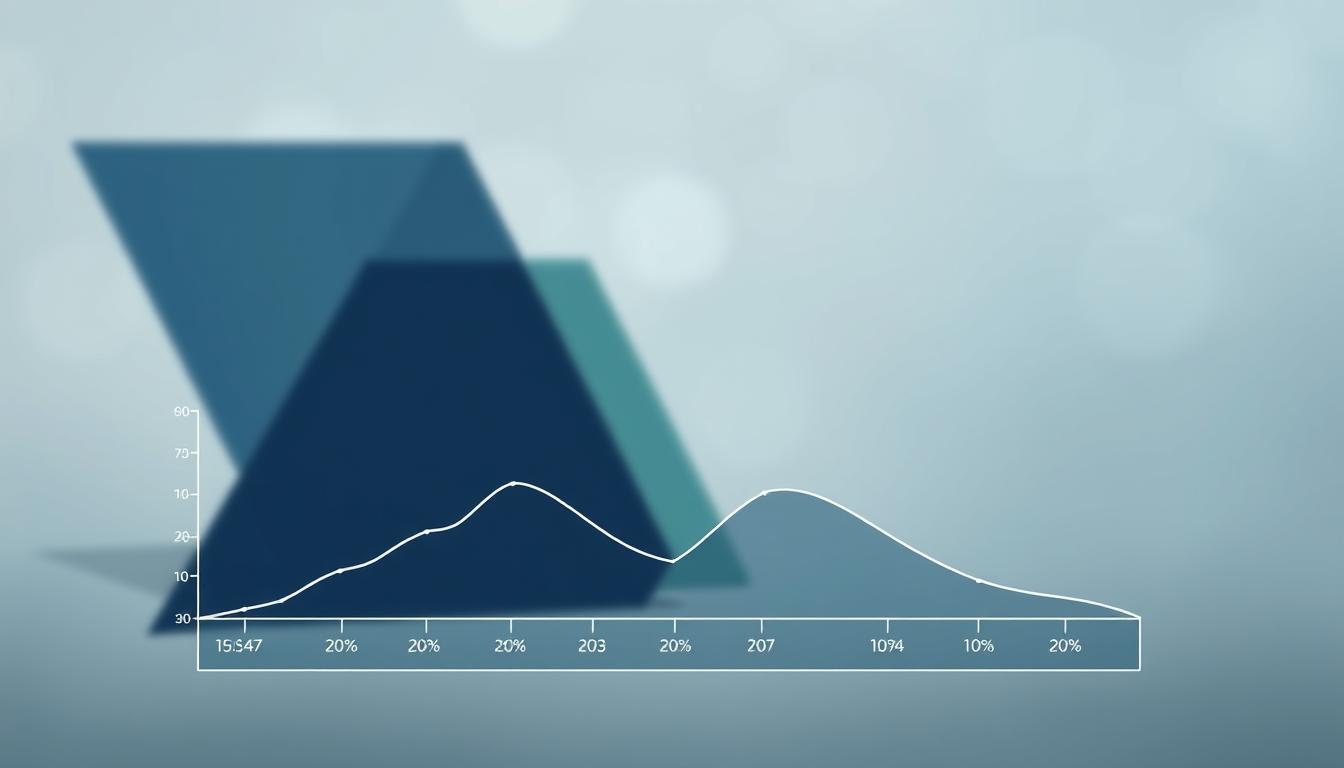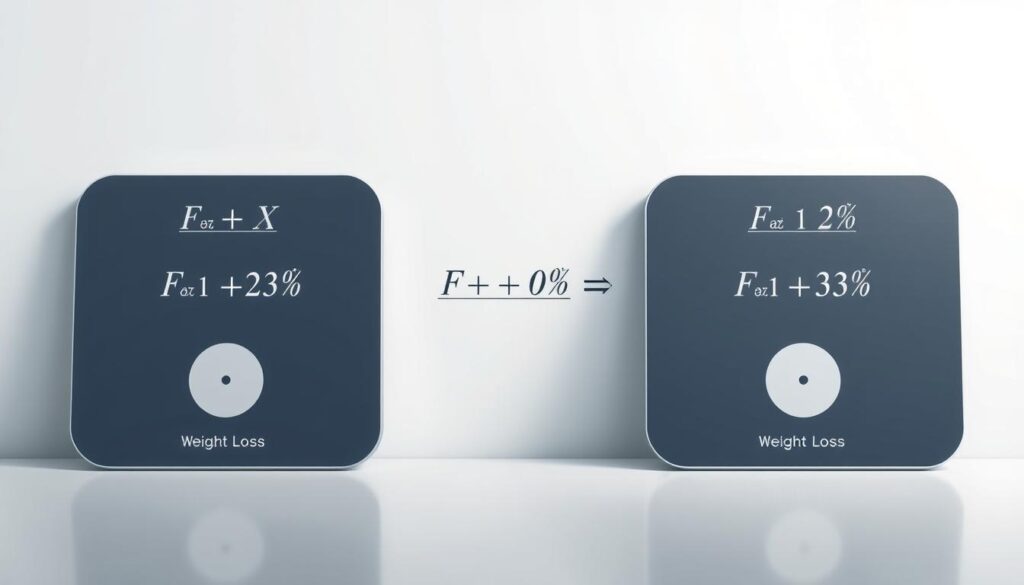What if the scale isn’t telling the whole story about your fitness journey? Many focus solely on pounds lost, but tracking body changes through percentages offers a clearer picture of success. Unlike basic measurements, this method accounts for your unique starting point and highlights meaningful shifts in body composition.
Consider two people: one starts at 200 pounds, another at 150. Both losing 10 pounds might seem equal, but percentage-wise, the impact differs. This approach helps you understand progress relative to your initial weight, making goals more personalized and achievable.
Numbers aren’t everything. Muscle gain, fat loss, and non-scale victories like improved energy also matter. Research shows even a 5% reduction in body weight can lower diabetes risk and boost heart health. Small wins add up!
Our guide simplifies measuring these changes. We’ll break down formulas, tools, and strategies to track what truly counts. Ready to see your hard work in a new light?
Key Takeaways
- Tracking percentages reveals progress relative to your starting weight.
- Body composition changes (muscle vs. fat) impact results beyond the scale.
- A 5% reduction can significantly improve metabolic health.
- Comparisons between individuals are more accurate using percentages.
- Non-scale victories complement numerical data for holistic progress tracking.
Understanding the Importance of Tracking Weight Loss Progress
Ever wonder why that number scale leaves you frustrated despite visible changes? Registered dietitian Melissa Majumdar notes, “The digits reflect water shifts and muscle gains as much as fat loss.” Your jeans fitting better or climbing stairs without gasping matter just as much as pounds shed.
Why Numbers Don’t Tell the Whole Story
Muscle weighs more than fat. A shrinking body fat percentage often hides behind static scale numbers. Research shows losing just 5% total mass improves blood sugar control and reduces heart disease risk. Tracking these shifts helps spot trends when plateaus hit.
Non-Scale Victories and Behavioral Changes
Nancy Farrell Allen emphasizes, “Celebrate energy boosts or consistent workouts—they’re proof your habits work.” Consider these markers:
- Clothing fit improvements
- Increased stamina during exercise
- Better sleep quality
Monitoring weight loss isn’t about obsession—it’s about recognizing patterns. When the scale stalls, body measurements or fitness milestones keep motivation alive. Success lives beyond three digits blinking on your bathroom floor.
The Formula and Mathematics Behind Weight Loss Percentage
Why do two people shedding the same pounds see different results? The answer lies in proportional math. By measuring changes relative to your starting point, you gain insights that raw numbers can’t provide.
Breaking Down the Calculation Method
Let’s simplify the math. The core equation is:
(Lost Pounds ÷ Original Pounds) × 100
For a 250-pound person losing 10 pounds: (10 ÷ 250) × 100 = 4%. This percentage reflects their journey’s intensity better than the number 10 alone.
Real-World Examples to Illustrate the Formula
Consider these scenarios:
| Starting Weight | Pounds Lost | Percentage Lost |
|---|---|---|
| 180 lbs | 9 lbs | 5% |
| 220 lbs | 11 lbs | 5% |
Both achieve 5% reduction, but different pound losses. This shows why percentages matter when comparing progress across individuals.
Tracking these metrics over weeks helps identify patterns. For precise calculations, use our weight loss percentage calculator. It automates the math while letting you focus on sustainable habits like mindful food intake adjustments.
Essential Measurements and Tools for Monitoring Progress
Ever relied on a single dashboard light to assess your car’s engine? Just like vehicles need multiple diagnostics, tracking physical health requires diverse tools. While bathroom scales provide basic number updates, they miss critical details about muscle growth or fat distribution.
Beyond Basic Weight Tracking
Standard scales record daily fluctuations but lack context. Morning weigh-ins show changes influenced by hydration levels or recent meals. For deeper insights, consider these methods:
- Smart scales using bioelectrical impedance estimate muscle mass and water percentage
- Skinfold calipers measure subcutaneous fat thickness at key body points
- DEXA scans (clinical gold standard) reveal bone density and visceral fat
BMI calculations offer a quick health snapshot but don’t distinguish between lean tissue and adipose stores. A bodybuilder and couch potato might share identical BMI scores despite vastly different physiques.
Consistency matters most. Measure under similar conditions—same time of day, pre-meal, and after bathroom use. Daily scale readings help spot trends, while monthly body fat checks show compositional shifts. Remember: temporary spikes from salty meals or intense workouts aren’t failures—they’re data points guiding your way forward.
Integrating Nutrition and Exercise into Weight Loss Tracking
What fuels real transformation—the fork or the dumbbell? True progress emerges when nutrition and movement work in harmony. While measurements capture outcomes, daily habits drive lasting change.
Monitoring Food Intake and Caloric Balance
Tracking meals isn’t about strict diets. It’s understanding energy flow. A food diary reveals patterns—like afternoon snack cravings or portion creep. Apps like MyFitnessPal simplify logging while educating users on macros.
Consistency matters more than perfection. One day of overeating won’t derail progress, but weekly trends might. Pairing intake data with weight changes helps identify maintenance ranges and adjust targets.
Tracking Exercise and Physical Activity
Movement impacts body composition differently than the scale suggests. Strength training builds muscle, which burns more calories at rest. A Fitbit or Apple Watch tracks steps, heart rate zones, and active minutes—factors influencing metabolic shifts.
Consider this example: Two people lose 2 pounds weekly. One walks daily; the other lifts weights. Their body shapes will differ dramatically within months. Combining cardio with resistance training creates balanced results visible in measurements and mirror checks.
Weekly reviews of food logs and workout consistency reveal what’s working. Sustainable changes thrive when data meets adaptability—like swapping soda for sparkling water or adding 10-minute walks after meals.
How to calculate weight loss progress percentage: A Step-by-Step Guide
Precision matters when evaluating physical transformations. Reliable tracking starts with eliminating variables that skew results. Follow this systematic approach to ensure accuracy and reduce frustration.
Choosing Consistent Measurement Conditions
Morning routines create ideal baselines. We recommend these steps for dependable comparisons:
- Measure at dawn: Use the same scale after waking up and using the bathroom
- Check water intake: Record hydration levels from the previous evening
- Wear minimal clothing: Stick to underwear or lightweight outfits
| Tracking Frequency | Focus Area | Tools Needed | Key Benefit |
|---|---|---|---|
| Daily | Weight trends | Digital scale | Identifies patterns |
| Weekly | Body measurements | Tape measure | Shows inch loss |
| Monthly | Clothes fit | Favorite jeans | Reveals non-scale wins |
Apps like Happy Scale simplify trend analysis by smoothing daily fluctuations. Pair numerical data with progress photos taken in consistent lighting. Notice how clothes drape differently? That loose waistband confirms what numbers might miss.
Build a support system by sharing milestones with trusted friends. Celebrate every 1% shift—they compound into life-changing results. Remember: You’re not chasing digits, but sustainable health upgrades.
Practical Tips and Challenges on Your Weight Loss Journey
Plateaus test patience more than progress. When the scale stops moving, frustration often follows—but this stagnation doesn’t mean failure. Shifting focus to holistic markers like energy levels or waist measurements reveals hidden wins.
Breaking Through Stalls
Minor fluctuations happen naturally. Hormones, hydration, and muscle growth influence daily numbers. Try these adjustments when progress slows:
| Challenge | Solution | Benefit |
|---|---|---|
| Same workouts | Vary exercise intensity | Boosts metabolism |
| Calorie deficit stalls | Reassess food intake | Reignites fat loss |
| Lack of motivation | Track non-scale victories | Improves consistency |
Notice clothes fitting looser around the waist? That’s mass redistribution—a sign your habits work even if numbers plateau. Pair weekly measurements with body composition tracking for clearer insights.
Nutrition plays a key role. Small tweaks—like adding protein to meals—preserve muscle while shedding fat. Professionals recommend reviewing your plan every 4-6 weeks. Temporary stalls become breakthroughs when met with adaptable strategies.
Celebrate every boost in energy or strength. These shifts matter as much as pounds lost. Stay consistent, stay curious, and let data guide your next move.
Leveraging Technology and Apps for Better Progress Tracking
Modern tech turns guesswork into actionable insights. Gone are days of manual journals—today’s tools sync measurement data across devices, creating a holistic view of your health journey. From calorie counters to body scanners, innovation simplifies the process of staying accountable.
Review of Popular Fitness and Tracking Apps
Apps like MyFitnessPal transform diet management into a streamlined routine. Scan barcodes, log meals, and track macros in seconds. Fitbit devices sync with apps to monitor heart rate zones and sleep patterns—critical factors often overlooked in traditional tracking.
Consider these features when choosing tools:
- Integration with wearables for real-time updates
- Customizable goals based on activity levels
- Community challenges to boost motivation
Digital Tools for Body Composition Analysis
Smart scales like Withings measure BMI, muscle mass, and water percentage through bioelectrical impedance. For deeper insights, clinics offer DEXA scans revealing visceral fat distribution—a game-changer for targeting stubborn areas.
Pair these tools with apps that visualize trends. Weekly reports highlight patterns, helping adjust workouts or nutrition plans. Trackers and apps create accountability bridges between effort and results.
Experiment to find your perfect tech combo. Consistency meets convenience when data flows seamlessly from wrist to dashboard.
Conclusion
Your wellness journey is a mosaic of metrics and moments. While weight loss percentage offers valuable insights, it’s one piece of a larger puzzle. Combine scale data with body measurements, energy shifts, and clothing fit changes for a complete picture of transformation.
Consistency matters most. Weekly check-ins using smart scales or tape measures reveal trends raw numbers miss. Challenges like plateaus aren’t roadblocks—they’re opportunities to refine nutrition plans or intensify workouts.
Celebrate every win: looser waistbands, easier workouts, or better sleep patterns. These non-scale victories prove your habits work even when progress feels slow. Sustainable change thrives when data meets self-compassion.
Need guidance? Our team helps decode your unique patterns. Remember—health isn’t a destination, but a dynamic process worth tracking with patience and pride.


